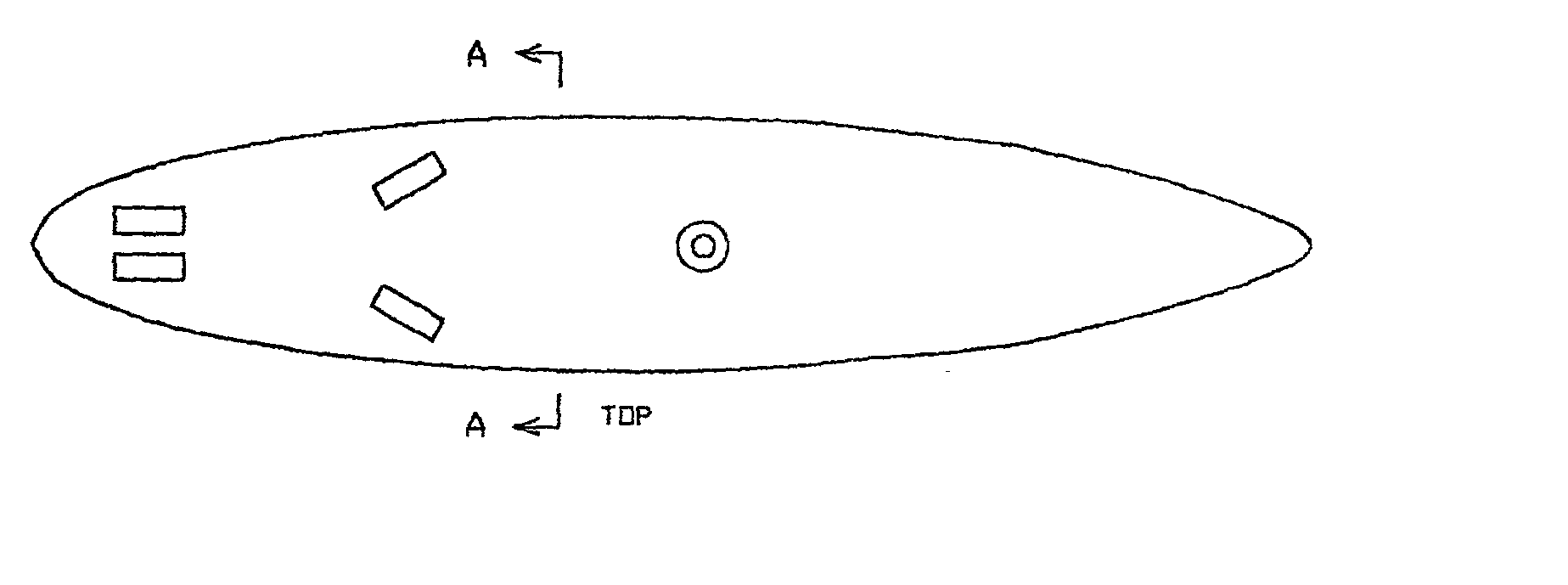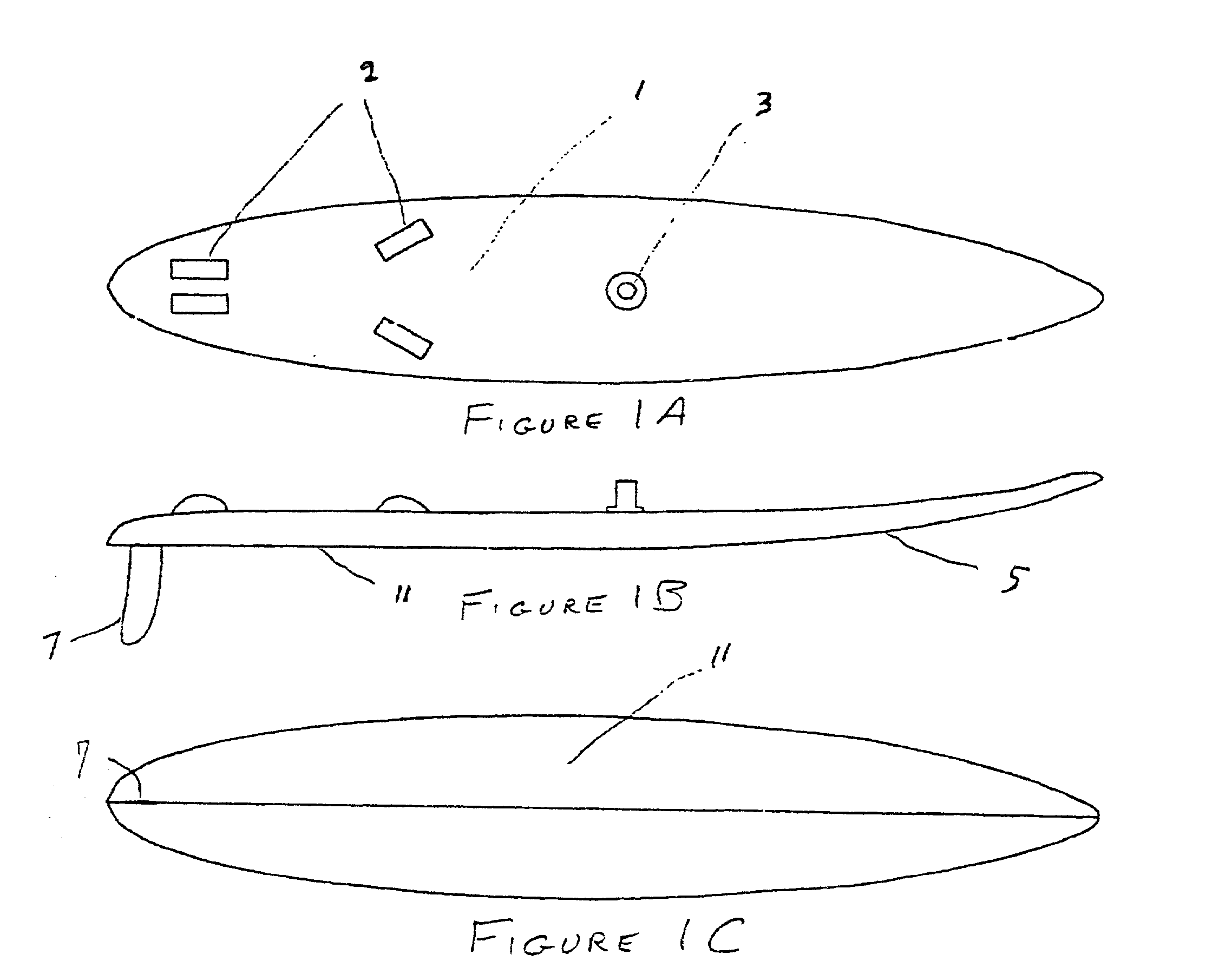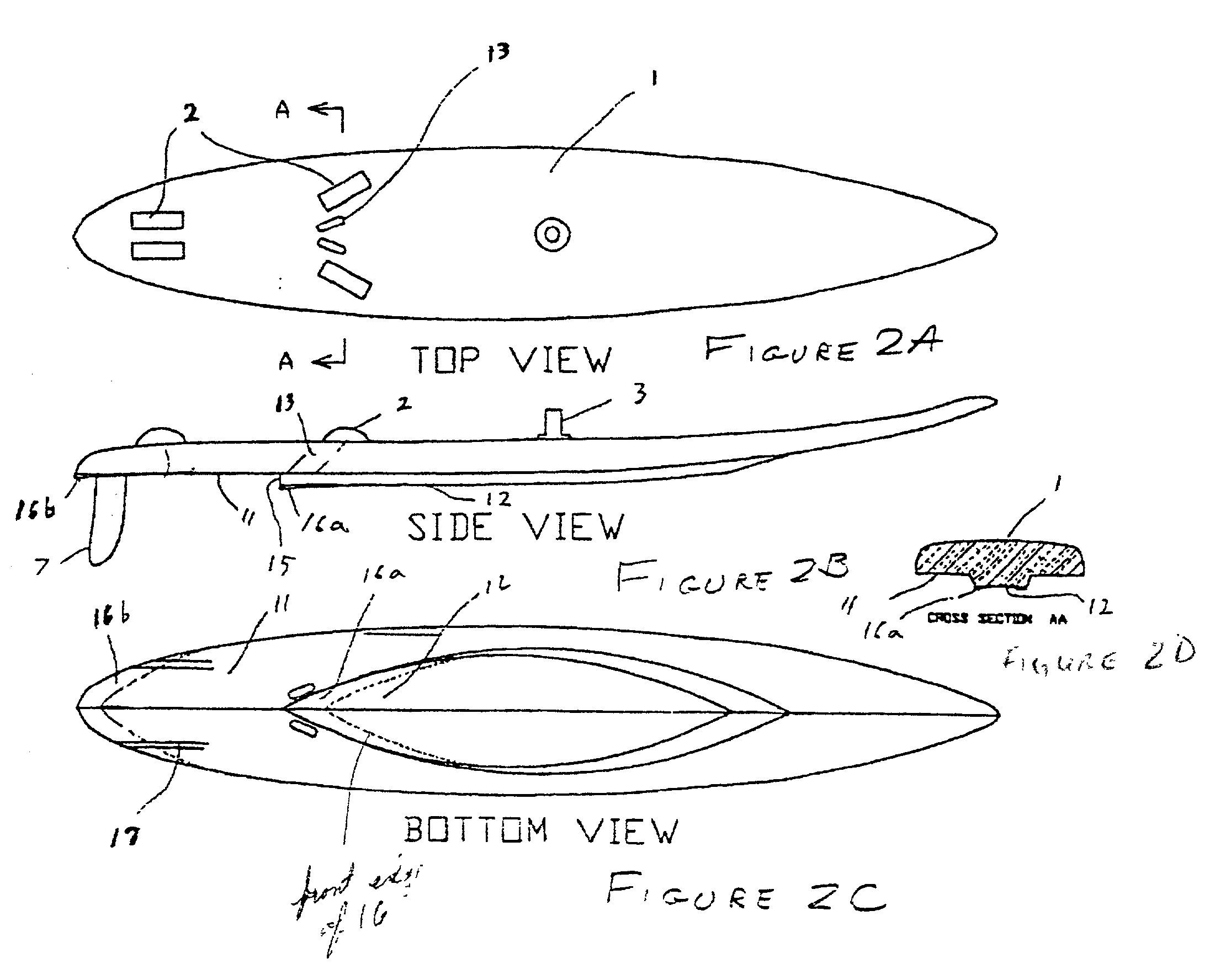Planing sailboard
a technology for sailing boards and sailboards, which is applied in the field of watercraft sailing boards/windsurfers, can solve the problems of not being as fast as planing "slalom" or short boards, not plane well, and boards like the commercially available pro-tech c. a. t. are wide and short, and very fas
- Summary
- Abstract
- Description
- Claims
- Application Information
AI Technical Summary
Benefits of technology
Problems solved by technology
Method used
Image
Examples
Embodiment Construction
[0046] Referring now to the drawings, and more particularly to FIGS. 1A-1C, there is shown top, side and bottom views, respectively, of a generalized sailboard hull 1 which, for reference, does not include features in accordance with the invention in its various forms and embodiments. Since FIGS. 1A-1C are generalized and arranged for illustrative purposes, however, no portion of these Figures is admitted to be prior art as to the present invention. The overall shape in the top or plan view of FIG. 1A is generally elliptical but may be slightly more pointed at the front or rear. foot straps 2 and a sail or mast foot (generally gimballed) are installed on the upper surface of as shown in FIGS. 1A and 1B. A gentle upward curve or "rocker" is illustrated in the side view of FIG. 1 at reference numeral 5. A fin 7 is shown extending from the bottom surface 11 of the board in the side and bottom views of FIGS. 1B and 1C. The bottom side of the board, as shown in FIG. 1C, is also shaped in...
PUM
 Login to View More
Login to View More Abstract
Description
Claims
Application Information
 Login to View More
Login to View More - R&D
- Intellectual Property
- Life Sciences
- Materials
- Tech Scout
- Unparalleled Data Quality
- Higher Quality Content
- 60% Fewer Hallucinations
Browse by: Latest US Patents, China's latest patents, Technical Efficacy Thesaurus, Application Domain, Technology Topic, Popular Technical Reports.
© 2025 PatSnap. All rights reserved.Legal|Privacy policy|Modern Slavery Act Transparency Statement|Sitemap|About US| Contact US: help@patsnap.com



